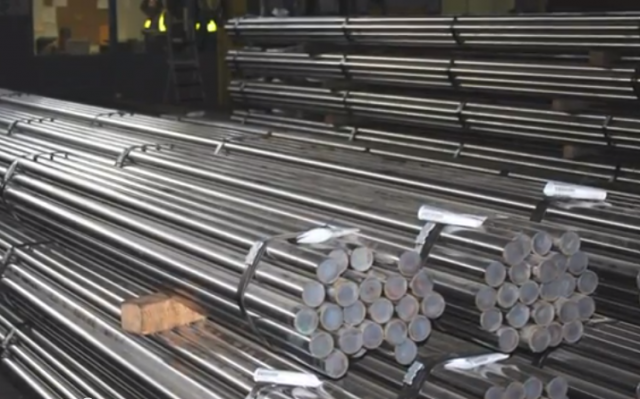As noted in an earlier post, different types of steel undergo a wide range of processes to achieve the proper physical properties. Many people have heard that there’s a difference between hot and cold rolled steel, but don’t understand what how the production of hot rolled or cold rolled steel is different from one another, what industries and applications hot rolled and cold rolled serve, and whether hot rolled or cold rolled is the best for their own welding, machining or other needs.Like the name suggests, all types of rolled steel are passed through either two or four rolls. The rolls squeeze the steel and apply pressure to flatten or shape it into the desired shape, which changes the physical properties of the steel. The steel almost always goes through rolls more than once until the shape or approximate shape of the steel is achieved.
Like the name suggests, all types of hot and cold rolled steel are passed through either two or four rolls. The rolls squeeze the steel and apply pressure to flatten or shape it into the desired shape, which changes the physical properties of the steel. The steel almost always goes through rolls more than once until the shape or approximate shape of the steel is achieved.

Hot Rolled Steel
The Difference
The process of hot rolling involves rolling steel at a temperature above the steel’s recrystallization temperature, which takes place over 1700 degrees Fahrenheit. Steel that is above the recrystallization temperature can be shaped and formed much more easily than colder steel, and the steel can start in much larger sizes. It is also typically cheaper to manufacture than cold rolled steel and is often manufactured without pauses or delays in the process so the steel doesn’t need to be reheated. During the cooling process, hot rolled steel will shrink and the size and shape of the steel will be less predictable than cold rolled steel.
Appearance
Hot rolled products will have a scaly grey finish and more rounded and less precise corners than cold rolled steel. This makes hot rolled steel more ideal for applications where extremely precise dimensions are not necessary, and neither is the appearance. Sometimes the scaly finish is preferred for the end product in machining or metalworking.
Mechanical Properties
The mechanical properties of steel often depend on their grade, or chemical makeup. For that reason, it is never safe to make assumptions about the mechanical properties of hot rolled vs cold rolled unless they are the same grade. Using the very common 1018 as an example, the chemical properties of 1018 steel will be the same. However, we can see there are key differences between cold rolled and hot rolled.
| Hot Rolled | Cold Rolled | |
| Tensile Strength | 67,000 psi | 85,000 psi |
| Yield Strength | 45,000 psi | 70,000 psi |
| Reduction of Area | 58 | 55 |
| Elongation in 2″ | 36 | 28 |
| Brinell Hardness | 137 | 167 |
What It’s Used For
You’ll find hot rolled products like hot rolled steel bars in the welding and construction trades such as making railroad tracks, I-beams, and other steel construction materials that don’t require super precise shapes.
Cold Rolled Steel
The Difference
Cold rolled steel is manufactured at temperatures below its recrystallization temperature, typically at around room temperature. Because the steel is manufactured at a much lower temperature, there’s no need to worry about the steel shrinking or changing form or appearance.
Appearance
The cold rolled steel end products like cold finished steel bar has a much smoother appearance and may have square corners more accurate in dimension and finish.
Mechanical Properties
See the chart above. The yield strength and tensile strength of cold rolled will be higher than hot rolled, which makes cold rolled less likely to fracture under pressure.
What It’s Used For
Cold rolled steel is much more preferred in the machining world where the quality of the steel is an important factor of the quality of the final product, and the appearance of the steel is also an important factor.
Summary
The following are some of the key differences in hot rolled vs cold rolled steel:
- Hot rolled steel is rolled or shaped at a high temperature while cold rolled steel is rolled at room temperature.
- Cold rolled has a smooth and shiny finish while hot rolled has a grey and scaly finish.
- Cold rolled has sharper corners and more precise dimensions than hot rolled.
- In general, cold rolled has better mechanical properties than hot rolled.
- Cold rolled is more expensive than hot rolled.





